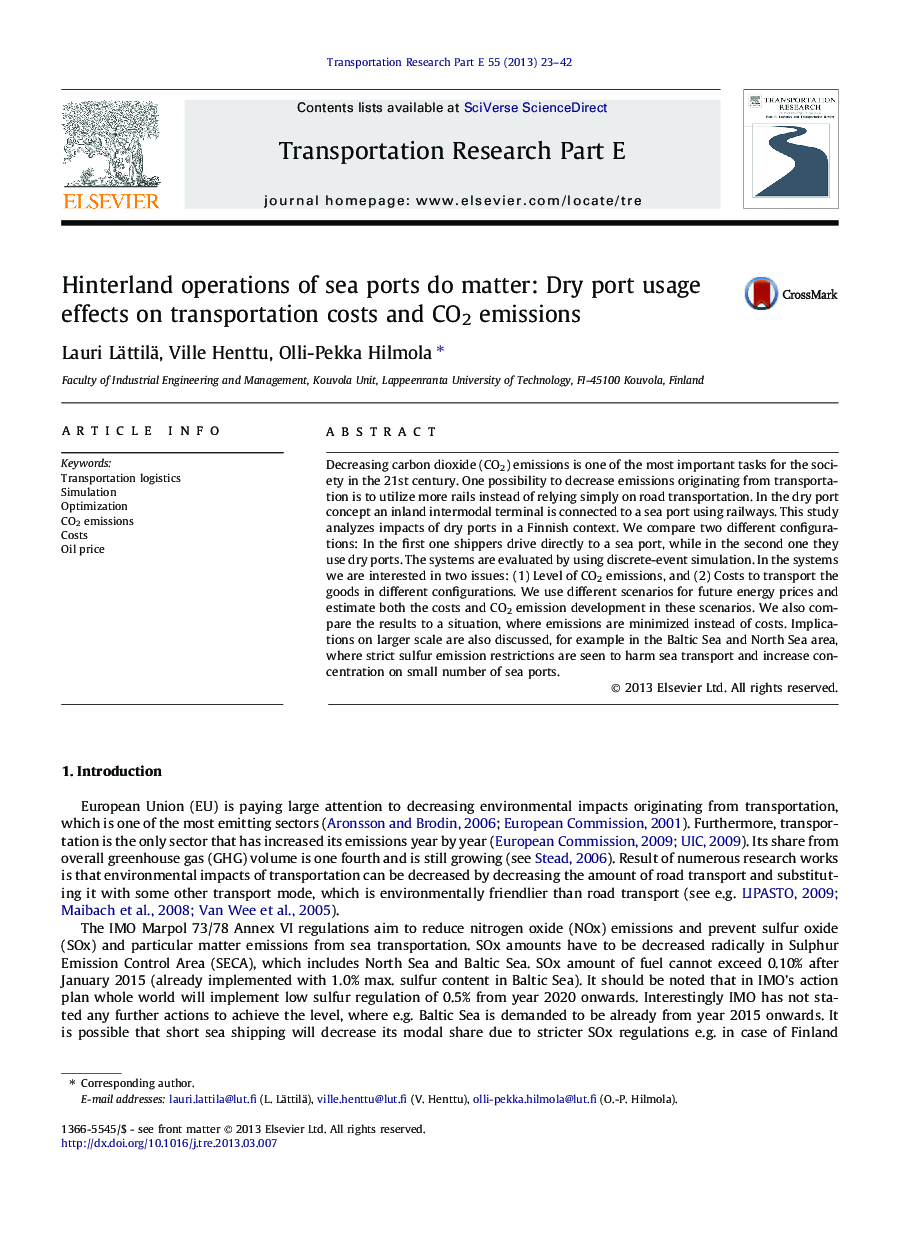| Article ID | Journal | Published Year | Pages | File Type |
|---|---|---|---|---|
| 1023488 | Transportation Research Part E: Logistics and Transportation Review | 2013 | 20 Pages |
•We report a method how to estimate potential locations for dry ports.•We model a hypothetical dry port network in national scale.•Volume of CO2 emissions and costs of transportation are evaluated.•By utilizing dry ports it is possible to decrease both emissions and costs.•Substituting dear diesel oil with cheap electricity is identified as key relationship and driver in the wider use of railways.
Decreasing carbon dioxide (CO2) emissions is one of the most important tasks for the society in the 21st century. One possibility to decrease emissions originating from transportation is to utilize more rails instead of relying simply on road transportation. In the dry port concept an inland intermodal terminal is connected to a sea port using railways. This study analyzes impacts of dry ports in a Finnish context. We compare two different configurations: In the first one shippers drive directly to a sea port, while in the second one they use dry ports. The systems are evaluated by using discrete-event simulation. In the systems we are interested in two issues: (1) Level of CO2 emissions, and (2) Costs to transport the goods in different configurations. We use different scenarios for future energy prices and estimate both the costs and CO2 emission development in these scenarios. We also compare the results to a situation, where emissions are minimized instead of costs. Implications on larger scale are also discussed, for example in the Baltic Sea and North Sea area, where strict sulfur emission restrictions are seen to harm sea transport and increase concentration on small number of sea ports.
